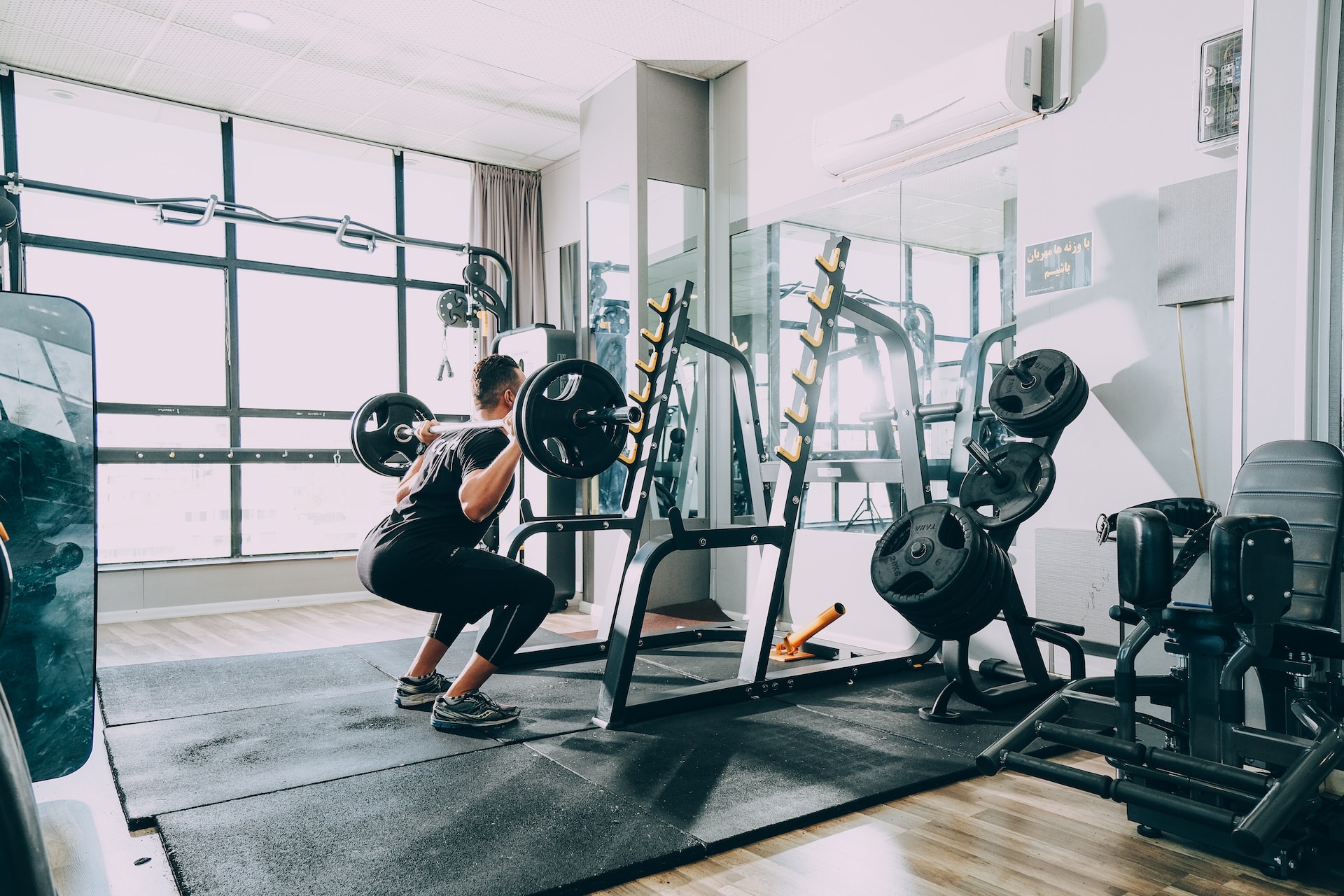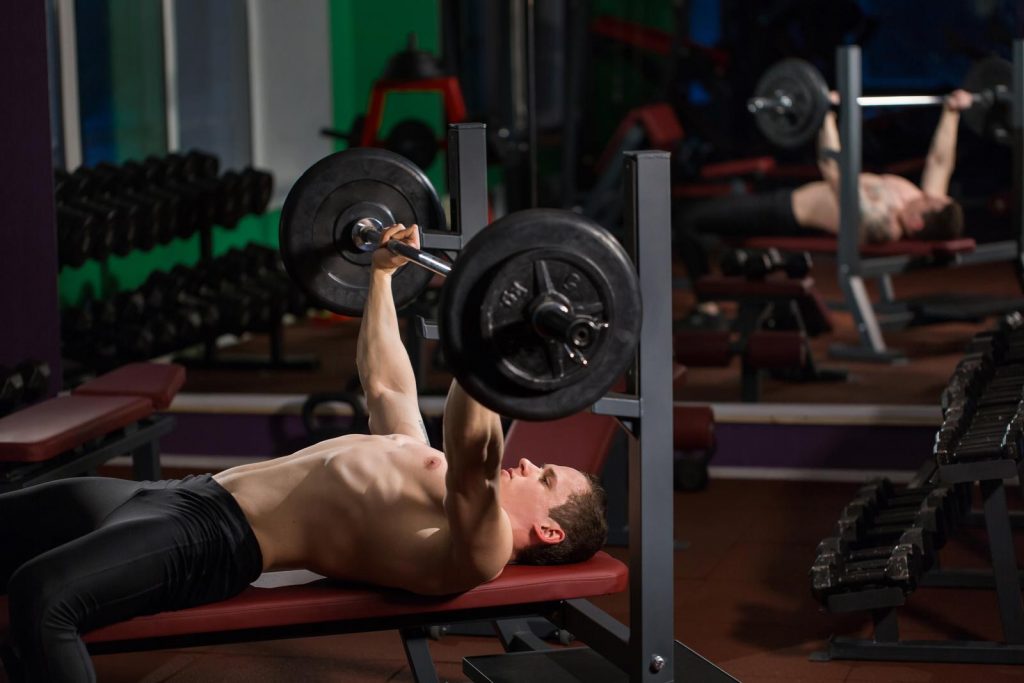
Top Exercises to Perform with a Barbell Weight Set
A barbell weight set is a versatile piece of gym equipment that can take your workouts to the next level. Whether you’re a beginner or an advanced lifter, incorporating barbell exercises into your routine can enhance strength, promote muscle growth, and improve overall fitness.
With the ability to add or remove weight plates, you have full control over the intensity of your workouts. From squats and deadlifts for lower body strength to bench presses and overhead presses for upper body development, the possibilities are endless with a barbell weight set. Get ready to challenge yourself and achieve your fitness goals with these top-notch exercises.
Barbell Deadlift: Mastering the Hip Hinge Technique
Engages Multiple Muscle Groups Simultaneously
The barbell deadlift is a compound exercise that engages multiple muscle groups simultaneously, making it one of the best exercises to perform with a barbell and weight set. It primarily targets the lower body, including the hamstrings, glutes, and quadriceps. It also activates the muscles in your back, core, and shoulders.
Builds Lower Body Strength and Improves Posture
One of the key benefits of performing barbell deadlifts is that it helps build lower body strength. By lifting heavy weights from the ground using proper form and technique, you can strengthen your leg muscles and improve overall lower body power. This exercise also contributes to better posture as it strengthens the muscles responsible for maintaining an upright position.
Proper Form is Crucial to Prevent Injuries
When performing barbell deadlifts or any variation of this exercise, proper form is crucial to prevent injuries. The hip hinge movement pattern is essential for executing this exercise correctly. To ensure proper form:
-
Start with your feet shoulder-width apart.
-
Bend at your hips while keeping your back straight.
-
Grip the barbell with an overhand grip slightly wider than shoulder-width apart.
-
Maintain a neutral spine throughout the movement.
-
Drive through your heels as you lift the weight off the ground by extending your hips.
Remember to start with lighter weights until you have mastered the technique and gradually increase weight as you become more comfortable and confident in your ability.
Incorporating barbell deadlifts into your workout routine can yield significant benefits for building strength in multiple muscle groups while improving overall posture. However, always prioritize safety by focusing on proper form and technique to avoid injuries.
Read Also: Barbells vs. Dumbbells – Which Gym Equipment is Right for You?
Barbell Row: Proper Grip and Form
The barbell row is a fantastic exercise for targeting the back muscles and building a strong upper body. It not only helps improve posture but also prevents imbalances that can lead to injuries down the road.
Neutral Spine is Key
When performing the barbell row, it’s crucial to focus on maintaining a neutral spine throughout the movement. This means keeping your back straight and avoiding excessive rounding or arching.
Grip and Starting Position
To begin, stand with your feet shoulder-width apart and slightly bend your knees. Grab the barbell with an overhand grip, hands slightly wider than shoulder-width apart. Keep your arms straight as you hinge forward at the hips, lowering your torso until it’s almost parallel to the floor.
The Pulling Motion
With your core engaged, pull the barbell towards your lower chest by retracting your shoulder blades. Imagine squeezing a lemon between them! As you pull, keep your elbows close to your body and avoid using momentum to swing the weight up.
Tip: Rack Pulls for Beginners
If you’re new to barbell rows or have limited mobility, starting with rack pulls can be beneficial. Set up a power rack so that the barbell rests just below knee level. This allows you to focus on proper form without worrying about bending too far forward.
Incorporating barbell rows into your workout routine will strengthen your back muscles, improve posture, and enhance overall upper body strength. Remember always to prioritize maintaining a neutral spine and using proper form during each repetition.
Barbell Overhead Press: Building Upper Body Strength
The barbell overhead press is a fantastic exercise for building strength in your upper body. It primarily targets the shoulder, chest, and tricep muscles, helping you develop size and definition. But that’s not all! This compound movement also engages your core and enhances stability throughout your entire body.
To perform the barbell overhead press, start by standing with your feet shoulder-width apart and the barbell resting on your upper chest, just below your chin. Grip the bar slightly wider than shoulder-width apart with an overhand grip.
Develops Shoulder, Chest, and Tricep Muscles
As you press the barbell overhead, focus on using your shoulder muscles to lift the weight. This exercise specifically targets the deltoids (shoulders), but it also engages the upper chest and triceps as secondary muscle groups. By incorporating this exercise into your routine, you can effectively build strength and hypertrophy in these areas.
Enhances Stability and Core Strength
The barbell overhead press requires a great deal of stability throughout your entire body. As you push the weight up above your head, you have to engage your core muscles to maintain balance and control. This not only strengthens your abs but also improves overall stability during other exercises or daily activities.
Start with Lighter Weights to Perfect Technique Before Progressing
When starting out with the barbell overhead press, it’s crucial to focus on perfecting your technique before adding heavier weights. Begin with lighter weights that allow you to maintain proper form throughout each repetition. Gradually increase the weight as you become more comfortable and confident in performing this exercise correctly.
Remember to keep proper form by keeping your feet shoulder-width apart, maintaining a strict press without using momentum or excessive arching of the lower back, bringing the bar down just below chin level at each rep, avoiding locking out at the top of each rep, and keeping your shoulder blades squeezed together throughout the movement.
So, if you’re looking to build upper body strength and develop impressive shoulder muscles, incorporate the barbell overhead press into your workout routine. Start with lighter weights, focus on technique, and gradually increase the load as you progress. You’ll be amazed at the results you can achieve!
Read Also: The Best Barbell Exercises for Mass and Strength
Barbell Bench Press: Ultimate Guide for Chest Development

Primary exercise for building chest muscles (pecs)
The barbell bench press is one of the best exercises you can perform with a barbell weight set to develop your chest muscles, also known as pecs. It’s a classic and effective compound movement that targets the major muscles in your chest. By lying on a flat bench and pushing the barbell up and down, you engage your pectoralis major muscles, giving them a challenging workout.
Engages triceps and shoulders as secondary muscles
While the primary focus of the barbell bench press is on your chest, it also works your triceps and shoulders as secondary muscle groups. As you lower the barbell towards your chest, your triceps are engaged to help control the descent. Then, as you push the barbell back up, both your triceps and shoulders come into play to assist in pressing the weight overhead.
Vary grip width to target different areas of the chest
One advantage of performing the barbell bench press is that you can vary your grip width to target different areas of your chest. A wider grip places more emphasis on the outer portion of your pecs, while a narrower grip shifts focus towards the inner portion. Experimenting with different grip widths allows you to work all angles of your chest for balanced development.
To summarize, the barbell bench press is an essential exercise for developing strong and well-rounded chest muscles. It not only targets your pecs but also engages other important muscle groups like the triceps and shoulders. By adjusting your grip width, you can customize this exercise to target specific areas of your chest.
Barbell Back Squat: Mastering Lower Body Strength
The barbell back squat is the king of lower body exercises, targeting your quads, glutes, hamstrings, and core. It’s a powerhouse move that engages multiple muscle groups at once, making it an efficient way to build strength and develop your lower body.
To perform a barbell back squat correctly, you need to focus on maintaining proper squatting technique. This means keeping your chest up, back straight, and knees aligned with your toes. If you don’t use the correct form, you risk straining your knees or back.
Start with a lighter weight to practice the movement and ensure you have the right technique down pat. As you become more comfortable and confident, gradually increase your weight while still maintaining good form. Remember, it’s better to lift lighter weights with proper form than to go heavy and sacrifice technique.
In addition to targeting your quadriceps (the muscles in the front of your thighs), the barbell back squat also works your glutes and hamstrings. It even engages your core muscles for stability and balance throughout the movement.
One crucial aspect of performing a successful barbell back squat is ankle mobility. If you lack flexibility in this area, it can affect your ability to maintain proper form during the exercise. Consider incorporating ankle mobility exercises into your routine to improve flexibility and enhance overall performance.
The barbell back squat is not just about building lower body strength; it also activates your posterior chain (the muscles along the backside of your body). This makes it a fantastic compound exercise that targets multiple muscle groups simultaneously.
So grab that barbell weight set and get ready to master one of the best exercises for developing lower body strength – the barbell back squat!
Read Also: How to Choose The Right Weight Rack for Your Home Gym
Embrace the Power of Barbell Exercises with Barbell Weight Set
Congratulations on completing the sections above and taking a step closer to unleashing your full potential with barbell exercises!
Now it’s time to put all that knowledge into action. Shop a high-quality barbell weight set and start challenging yourself. Remember, Rome wasn’t built in a day, so be patient with yourself as you progress. Push yourself beyond what you thought was possible and embrace the discomfort because that’s where growth happens. You’re capable of more than you can imagine!
FAQs
Can I perform these exercises if I’m a beginner?
Absolutely! While these exercises may seem intimidating at first, they can be modified to suit beginners. Start with lighter weights and focus on perfecting your form before gradually increasing the load.
How often should I incorporate barbell exercises into my workout routine?
It depends on your goals and current fitness level. Aim for at least two to three sessions per week to see noticeable results. However, always listen to your body and allow for adequate rest and recovery between workouts.
Will barbell exercises make me bulky?
Not necessarily! Building muscle mass is a gradual process that requires specific training protocols and nutrition plans. If your goal is not to bulk up but rather tone and strengthen your muscles, you can adjust your training accordingly by focusing on higher repetitions with moderate weights.
Can I do these exercises at home or do I need access to a gym?
You can definitely perform these exercises at home if you have a barbell weight set. However, some exercises may require a squat rack or bench, which might be available at a gym. Consider your equipment options and choose exercises that align with what you have access to.
Should I consult a professional before starting barbell exercises?
It’s always a good idea, especially if you’re new to weightlifting or have any underlying health conditions. A qualified fitness professional can assess your individual needs, provide guidance on proper form and technique, and help tailor a program that suits your goals and abilities.
